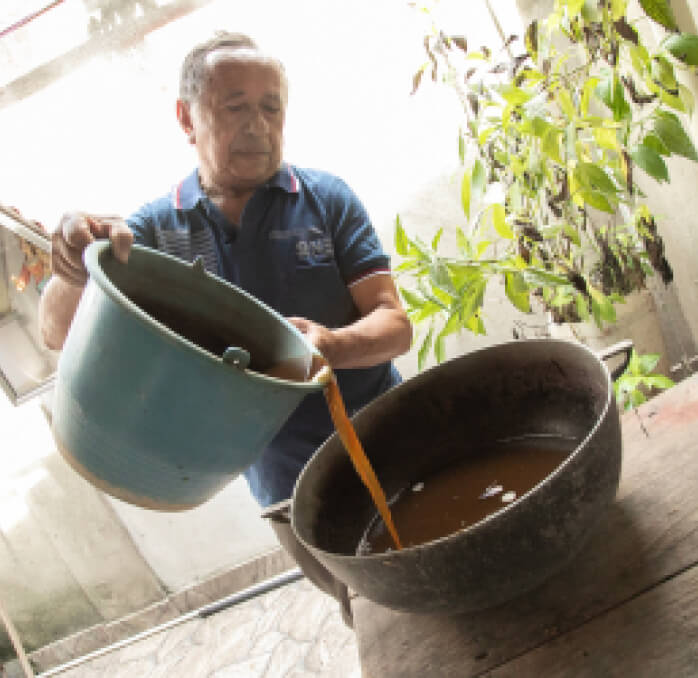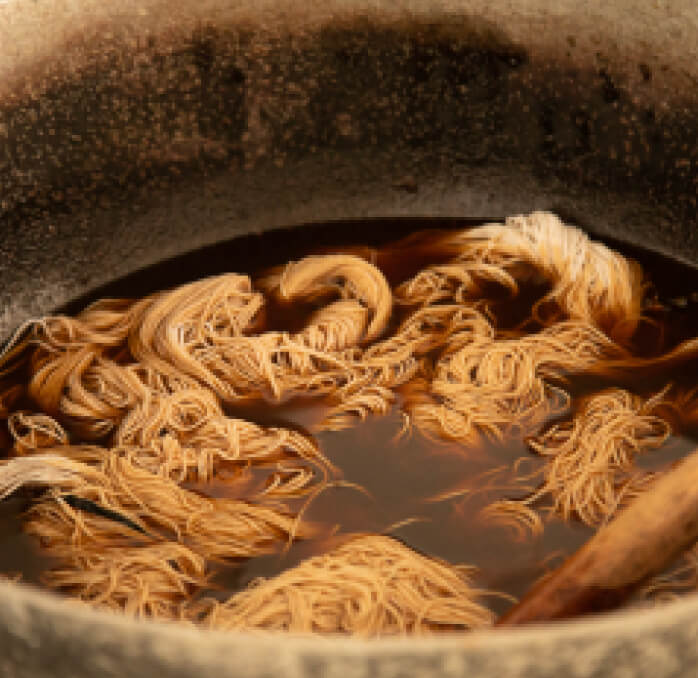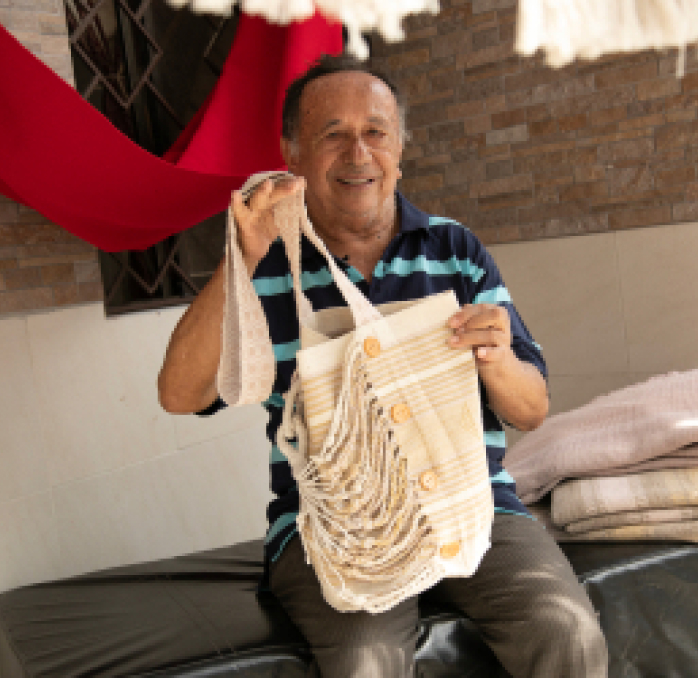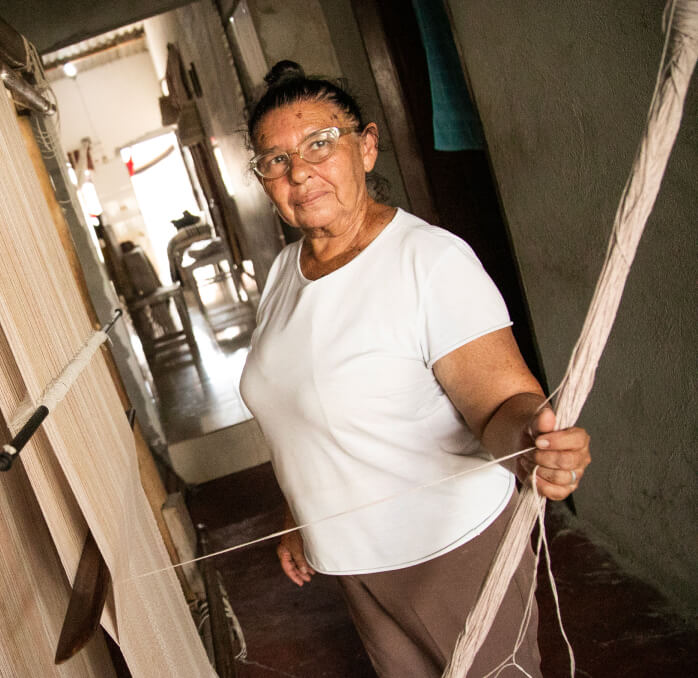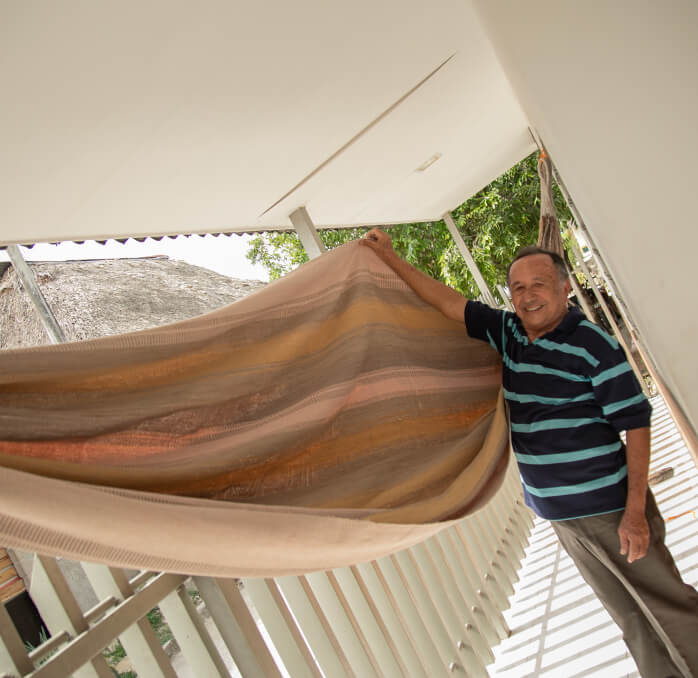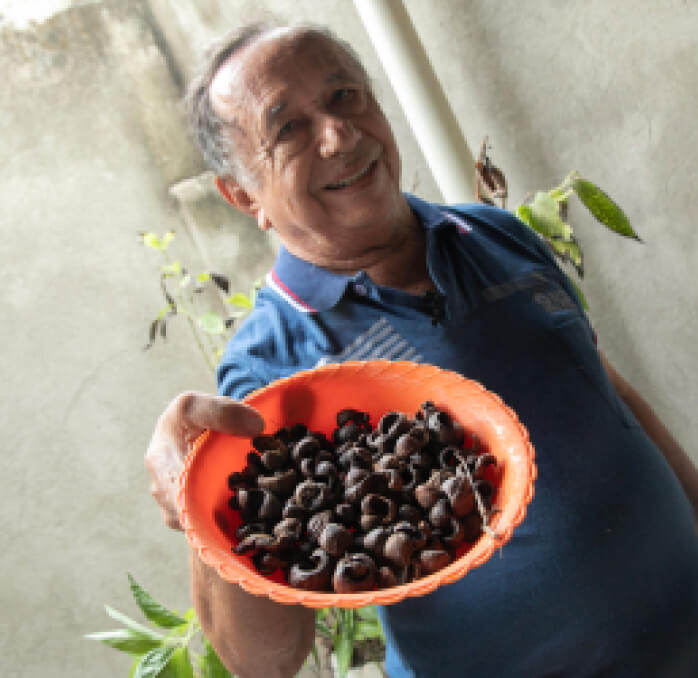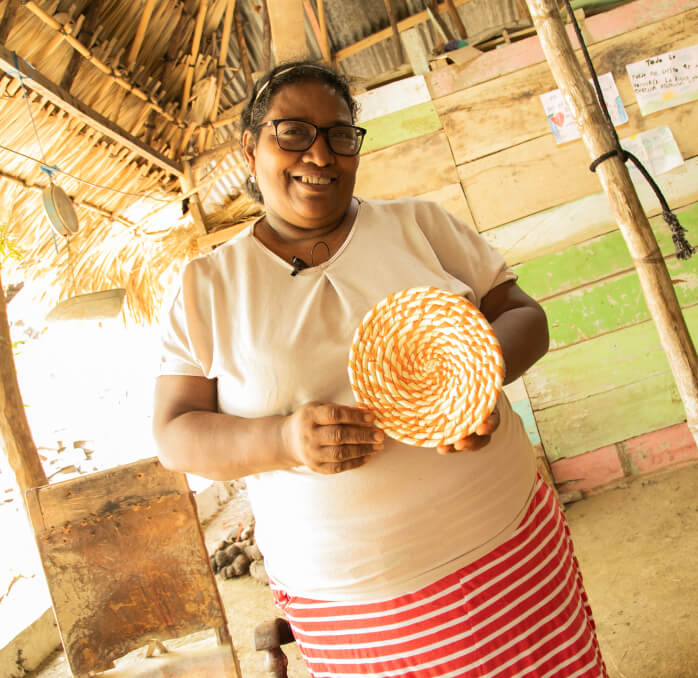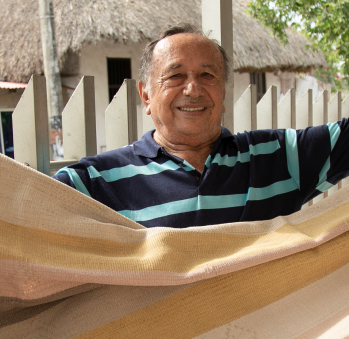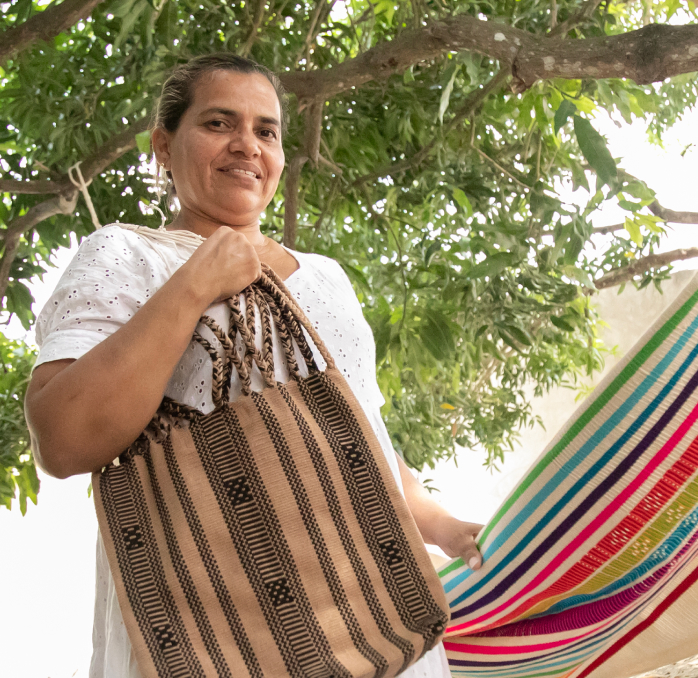Argemiro Corrales
Workshop: Artesanías Rosa María
Craft: Tejeduría
Trail: Sucre Route
Location: Morroa, Sucre
SCHEDULE YOUR VISIT
Carrera 5 # 4-16 barrio Rincón Centro, Morroa, Sucre
3007171205
argecorrales1@hotmail.com
Argemiro Corrales D’Luis was the only child, among seven, who chose to embrace the art of weaving hammocks as a livelihood. Now at the age of eighty, he stands as the last heir to a legacy passed down through generations of his grandmother’s lineage. He didn’t have children of his own and his nephews, whom he cherishes as though they were his own offspring, have chosen alternative paths in life. Among them is Tulio Corrales, the son of his brother, who knows everything about his uncle’s life story and expertise in working with natural dyes, despite not partaking in the weaving of hammocks.
In Morroa, it was customary for children to master the weaving of “”zunchos”” or “”fajas”” on small looms. These woven straps were used as currency for buying groceries, as local tales recount. However, the larger vertical looms used for hammock weaving were not generally handled by men. The popular belief said that men engaged in this craft were homosexual, thus confining it to the realm of women. Yet, Argemirowas determined to learn the craft in a time when men didn’t weave. Initially working as a watchman because of the difficult economic situation he faced, he soon to combat financial hardships, he soon discovered he could make a living out of this craft. His perseverance was shared by numerous men who found themselves in Morroa due to displacement caused by violence at the turn of the century, and many began weaving hammocks. This shattered the taboo, leading to the present situation in Morroa, where many of the weavers are male.
Around a decade ago, Argemiro trained himself in the art of using natural dyes. This unique approach imbued his hammocks with a distinct character. To some people, naturally dyed fabrics appear faded or weathered, unaware that pigments derived from plants are slightly less saturated than aniline dyes. The dyeing process is lengthy and varies based on the plant source, whether leaf, stem, or seed.
Among the natural dye sources, there’s “”bija,”” a vine whose leaves are harvested once they’ve dried and turned red. The drier the leaves, the more vibrant the dye. It’s believed that the moon’s phase influences the saturation level, with a specific phase yielding an intense pink hue. Another source is “”singamochila,”” a leafy plant that dyes green. Argemiro cultivates this plant in pots within his backyard. The “”batatilla,”” a tuber, provides shades of yellow or orange. Sawdust from the mora tree also yields a yellow hue. On the other hand, “”dividivi”” seeds are ground into dust before use, resulting in a brown dye. The dyeing process for cotton is almost the same with these plants: a boiling mixture is prepared, threads are immersed in it for a certain amount of time until the color fixes, and then the threads are rinsed and dried in the shade.
The following step is the weaving of the hammock. Argemiro winds and secures 1100 threads vertically onto the loom. He weaves and tightens until the desired length is reached. He estimates that the combined length of threads needed for a single hammock spans five kilometers. It takes him a week, confined within his workshop at home, to traverse this distance. Although he works alone, he collaborates with ten other weavers, each with their own looms, as is common in Morroa. Together, they create the hammocks that Argemiro has proudly showcased at Expoartesanías in Bogotá since 2009. These pieces bear the name of his mother, Rosa María, in remembrance of the tradition he has preserved with his own hands.
Craft
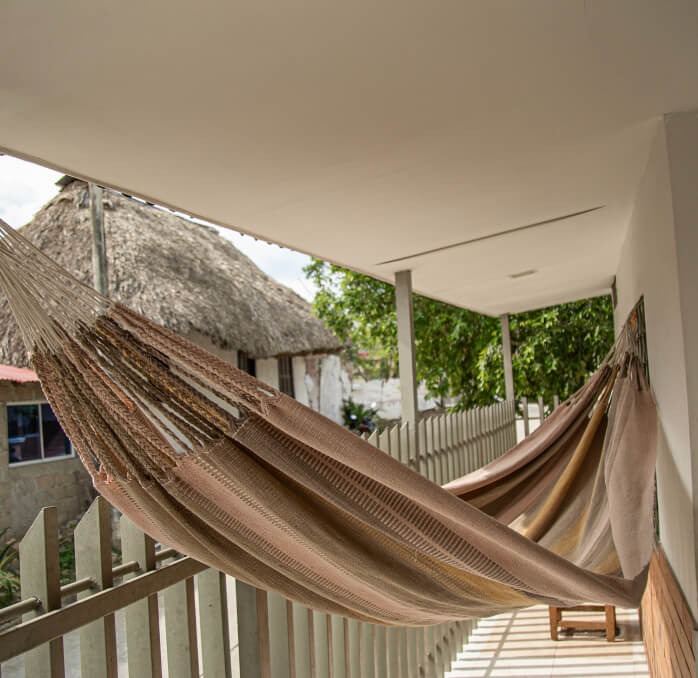
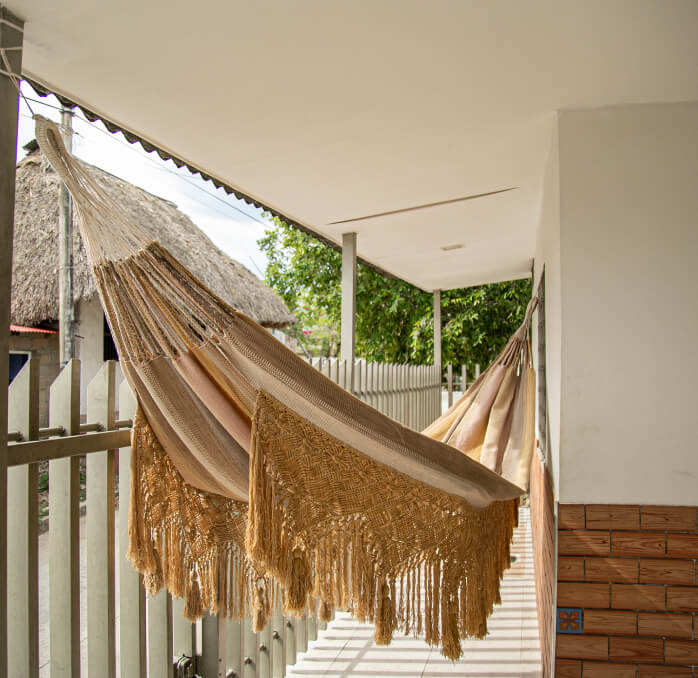
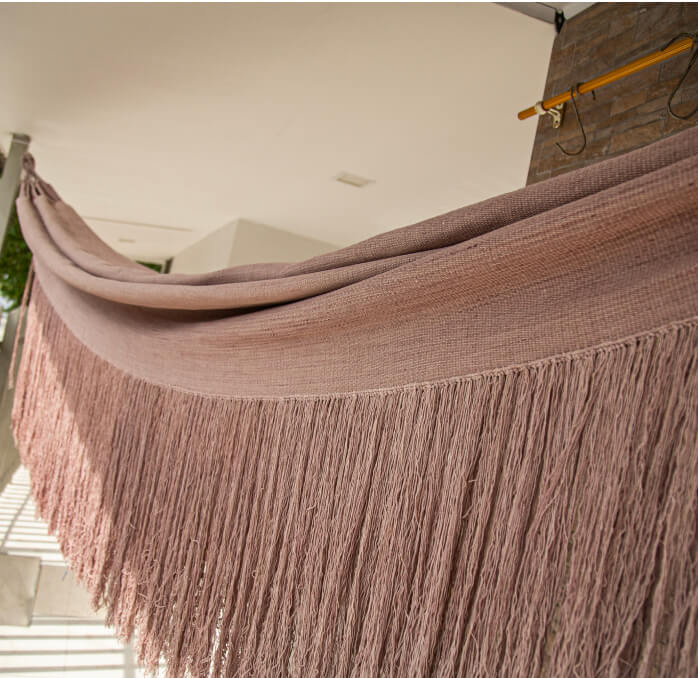
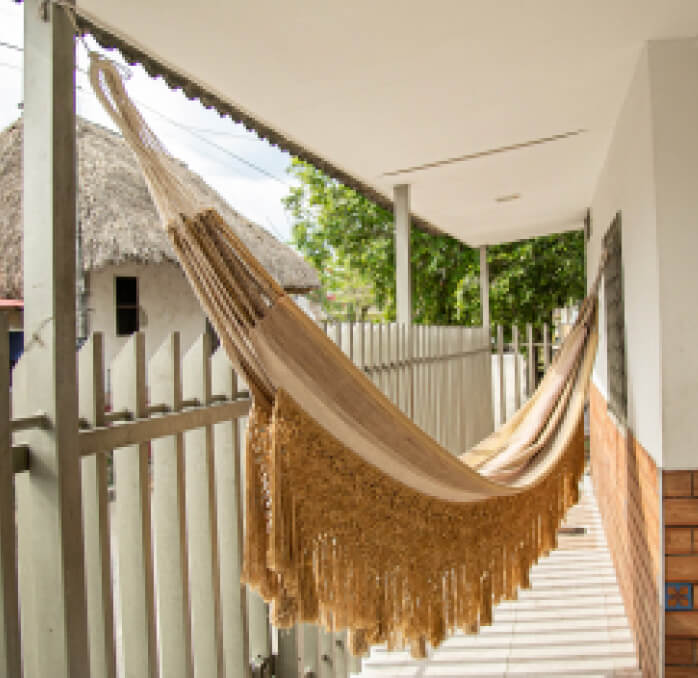




Artisans along the way
Artisans along the way
No puede copiar contenido de esta página








































